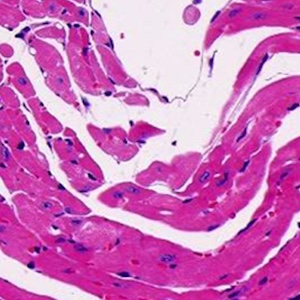 Smart Citations
Smart CitationsSee how this article has been cited at scite.ai
scite shows how a scientific paper has been cited by providing the context of the citation, a classification describing whether it supports, mentions, or contrasts the cited claim, and a label indicating in which section the citation was made.
Pre-treatment with galectin-1 attenuates lipopolysaccharide-induced myocarditis by regulating the Nrf2 pathway
Galectin-1 (Gal-1), a member of a highly conserved family of animal lectins, plays a crucial role in controlling inflammation and neovascularization. However, the potential role of Gal-1 in preventing myocarditis remains uncertain. We aimed to explore the functions and mechanisms of Gal-1 in preventing myocarditis. In vivo, C57/BL6 mice were pre-treated with or without Gal-1 and then exposed to lipopolysaccharide (LPS) to induce myocarditis. Subsequently, cardiac function, histopathology, inflammation, oxidative stress, and apoptosis of myocardial tissues were detected. Following this, qRT-PCR and Western blotting were applied to measure iNOS, COX2, TXNIP, NLRP3 and Caspase-1 p10 expressions. In vitro, H9c2 cells pre-treated with different doses of Gal-1 were stimulated by LPS to induce myocarditis models. CCK8, flow cytometry and reactive oxygen species (ROS) assay were then employed to estimate cell viability, apoptosis and oxidative stress. Furthermore, Nrf2 and HO-1 protein expressions were evaluated by Western blotting in vivo and in vitro. The results showed that in vivo, Gal-1 pre-treatment not only moderately improved cardiac function and cardiomyocyte apoptosis, but also ameliorated myocardial inflammation and oxidative damage in mice with myocarditis. Furthermore, Gal-1 inhibited TXNIP-NLRP3 inflammasome activation. In vitro, Gal-1 pre-treatment prevented LPS-induced apoptosis, cell viability decrease and ROS generation. Notably, Gal-1 elevated HO-1, total Nrf2 and nuclear Nrf2 protein expressions both in vivo and in vitro. In conclusion, pre-treatment with Gal-1 exhibited cardioprotective effects in myocarditis via anti-inflammatory and antioxidant functions, and the mechanism may relate to the Nrf2 pathway, which offered new solid evidence for the use of Gal-1 in preventing myocarditis.
Altmetrics
Downloads
Edited by
all animal experiments were performed according to the guidelines of laboratory animal care and were approved by the Animal Experimentation Ethics Committee of Zhejiang Eyong Pharmaceutical Research and Development Center, Hangzhou, ChinaSupporting Agencies
Huzhou Cardiovascular and Cerebrovascular Disease Discipline Group, Huzhou City Public Welfare Application Research ProjectHow to Cite

This work is licensed under a Creative Commons Attribution-NonCommercial 4.0 International License.
PAGEPress has chosen to apply the Creative Commons Attribution NonCommercial 4.0 International License (CC BY-NC 4.0) to all manuscripts to be published.








